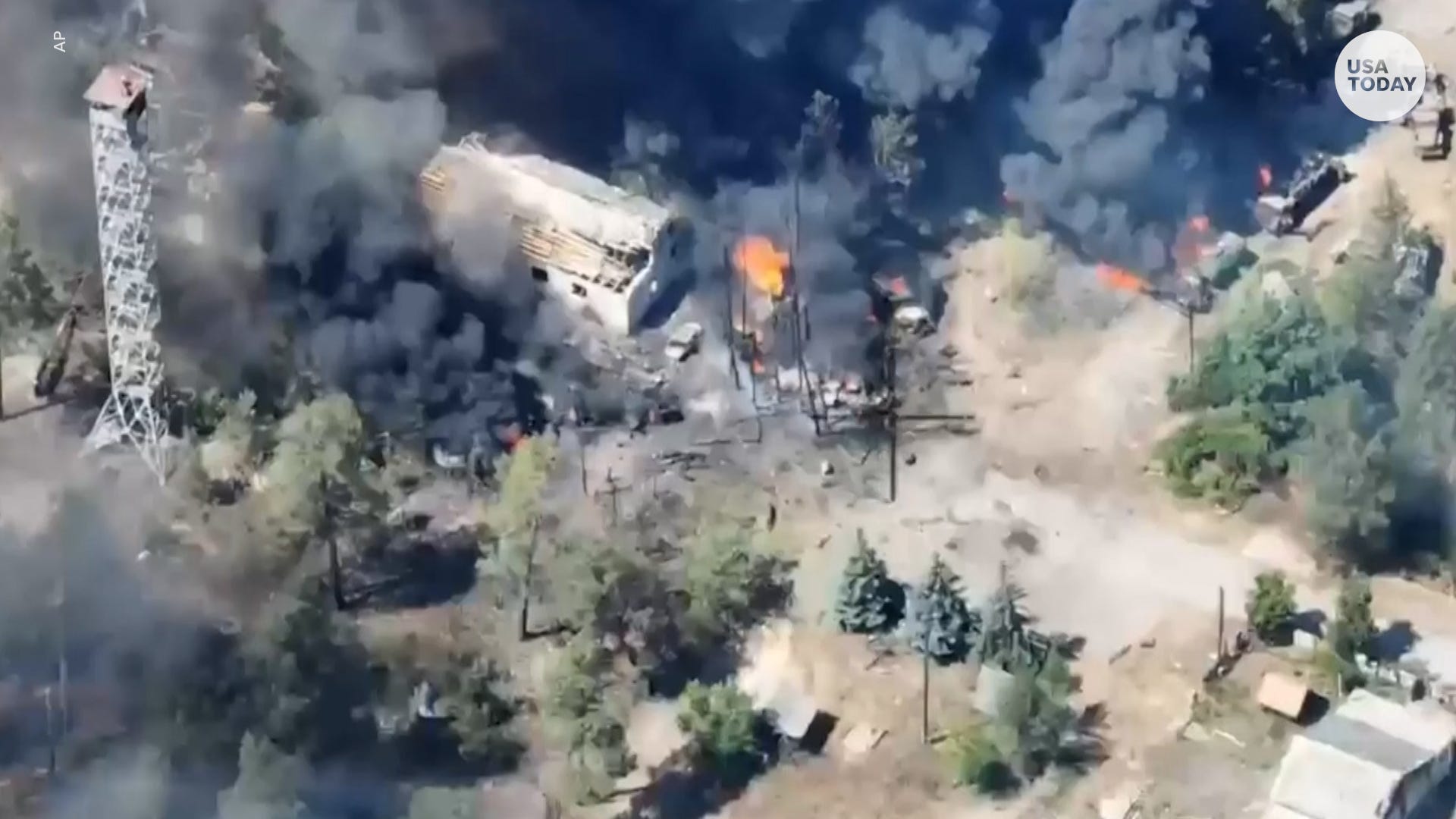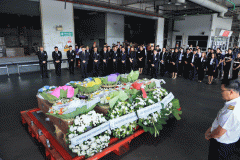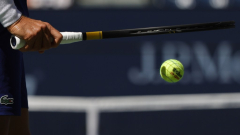
- Russia, with its vast supply of artillery, armor and troops, now has an edge, experts say.
- Ukraine still holds potent advantages, including a fierce will to fight.
- The direction of the conflict will likely come into clearer focus over the summer.
WASHINGTON – After its early military humiliation, Russia has regrouped in Ukraine and focused its wrath in the east with relentless shelling – giving Moscow momentum as the war moves into a bleak new phase.
In a war of attrition, Russia with its vast supply of artillery, armor and troops, now has an edge, military experts say. Ukraine still holds potent advantages of its own, according to a senior administration official: a fierce will to fight, firm command and control of its forces and increasingly sophisticated Western weapons.
Russia invaded its sovereign neighbor on Feb. 24 with the goal of quickly seizing the capital Kyiv and toppling Ukraine’s democratically elected government led by Volodymyr Zelenskyy. But Russian troops were plagued by poor planning and low morale and faced stiffer-than-anticipated resistance from Ukraine’s military, sparking Russia’s recalibrated strategy focused on capturing territory in the east.
USA TODAY ON TELEGRAM: Join our Russia-Ukraine war channel to receive updates straight to your phone
The direction of the conflict will likely come into clearer focus over the summer. Here are key takeaways on the current state of the war, Russia and Ukraine’s respective military advantages and vulnerabilities and what to look for next.
How has the war in Ukraine changed in recent weeks?
Combat in Ukraine has shifted to the eastern part of the country, its mineral-rich, industrial heartland. Since 2014, Russian-backed separatists have fought Ukrainian troops for control of the region known as the Donbas, which abuts Russia. That proximity has allowed Russia to avoid the problems of resupplying troops that doomed their initial attempt to take Kyiv in February.
Ukrainian forces used the forests of northern Ukraine around Kyiv to ambush the Russian columns that clung to established roads. After their retreat, the Russians have reconstituted battered battalion tactical groups, combat units that total about 700 to 1,000 soldiers. About 100 of those units are now in the Donbas, according to a senior administration official who was not authorized to speak publicly about the war and U.S. efforts to aid Ukraine.
The frontline of fighting extends more than 700 miles, winding south from near Kharkiv, Ukraine’s second-largest city, toward Kherson and the Black Sea coast, said Seth Jones, director of the international security program at the Center for Strategic and International Studies, a Washington think tank.
“About 20% of Ukrainian territory has de facto been annexed,” Jones said. “They’ve replaced currency with ruble in many areas, replaced the educational curriculum, including Russian history. The hand-picked local authorities are Russian.”
‘People are starving and thirsty’:: As the US sends aid to Ukraine, some say it’s not flowing fast enough
With relentless artillery shelling and reinforcements, the Russians have advanced toward the strategic Donbas city of Lysychansk, moving about three miles since June 19, according to a British Military Intelligence assessment released Thursday. Some Ukrainian troops have withdrawn from the area, probably to avoid being trapped.
But Russia’s effort to consolidate its control of the Donbas, made up of the Luhansk and Donetsk, remains stalled, British military intelligence analysts concluded.
The open, rolling terrain in the region favors long-range weaponry. The Russians’ strategy is to “soak” a target with massive volleys of artillery shells before making incremental advances by troops on the ground, the senior administration official said. The Ukrainians respond with artillery fire of their own, much of it coming from more than 100 M777 howtizer cannons supplied by the Pentagon.
“It’s turned into a war of attrition,” said Colin Smith, an expert on the Russian military at the Rand Corp. “And in a war of attrition, the force that has more forces tends to be more successful, right? Just sheer numbers.”
Biden is giving Ukraine the deadliest weapons yet. Will it make a difference?
Russia’s existing firepower vs. Ukraine new Western weapons
Russia, despite suffering devastating losses, still holds a significant edge in troops, armored vehicles and weaponry, the administration official said, including superior numbers of tanks, warplanes and artillery cannons. President Vladimir Putin’s forces have retained the majority of their combat power, which included more than 150,000 troops Russia massed at Ukraine’s border before the Feb. 24 invasion.
Russia’s supply lines in the eastern part of Ukraine are shorter and more secure, avoiding the logistics problems that left its troops without food, fuel or event bullets outside Kyiv, Jones said.
“Now they have contiguous territory,” Jones said. “Rail lines from Russia to the front that can bring artillery, tanks, infantry, ammunition.”
On Ukraine’s side of the ledger is the flow of increasingly sophisticated weaponry from the West. Long-range, rocket-assisted artillery – the High Mobility Rocket System – has a range of about 40 miles, more than double




